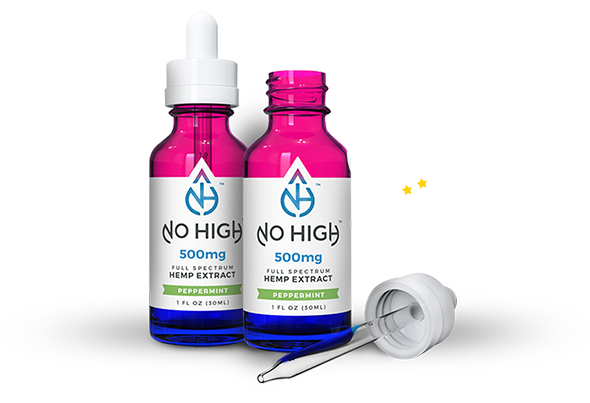This article will guide you in learning what difference between CBD vs. THC is and how these cannabinoids have different effects on the body. CBD oil has great health benefits and will not produce intoxicating effects. Some CBD oils also include significant levels of THC, which acts differently in the body and can produce psychoactive effects.
When purchasing CBD oil supplements online or in health stores, you might wonder, does CBD get you high? In stores like these, you are not likely to encounter CBD oils with THC that will get you high. In states with medical or recreational marijuana laws, these two types of products may be available side by side, requiring you to investigate the product closer. Understanding the benefits of CBD vs. THC oil will help you decide which product is best for your symptoms.
Cannabinoids and Human Biology
Cannabinoids are unique chemical compounds that occur naturally in all varieties of the cannabis plant. More than 100 different cannabinoids have been isolated from cannabis, with at least 80 having potential medical significance. Cannabidiol (CBD) and tetrahydrocannabinol (THC) are the most popular of all the cannabinoids.
CBD oils and CBD tincture products are attracting a lot of attention from people seeking symptom relief without the “high.” Many of these products are made from varieties of cannabis like hemp that have naturally minuscule levels of THC. Researchers are observing relief from a wide range of symptoms among CBD users. Cannabinoids can produce a wide array of health benefits by acting on the body’s endocannabinoid system.
The Endocannabinoid System
The human body has an endocannabinoid system that is linked to the central nervous system and the peripheral nervous system. Endocannabinoids are chemical compounds, similar in shape to cannabinoids, that exist naturally in the human body. These compounds interact with cannabinoid receptors; together, they can influence other body systems through nervous system messengers called neurotransmitters.
The endocannabinoid system regulates many systems in the human body. Cannabinoids from cannabis can interact with the receptors of the endocannabinoid system. This means that cannabinoids have vast therapeutic potential. Since each person’s body is wired a little differently, it also means that there is no one cannabinoid preparation that will be right for every person and every symptom.
Cannabinoid Receptors THC vs CBD
The difference between cannabinoids can be sensed by cannabinoid receptors. There are two main types of cannabinoid receptors in the endocannabinoid system. Cannabinoid receptor 1 (CB-1) was the first endocannabinoid receptor to be discovered, followed by cannabinoid receptor 2 (CB-2). They are found mainly in the brain and nervous system but are also present in organs and tissue. When the receptors are activated by cannabinoids or endocannabinoids, the initial effects are produced primarily in the brain and in the immune system.
Cannabinoids resemble naturally occurring endocannabinoids that are present in the human body so they can impersonate them to create the same effects. Neurotransmitters are one type of cell impacted by receptor activation. Neurotransmitters are like the messengers of the body. Their signals can be carried all over the body through the central and peripheral nervous systems to create broad effects on multiple body systems.
Cannabinoid Cell Communication
By mediating cell communication through cannabinoid receptors, CBD and THC can provide relief from several symptoms of common diseases and disorders. Most prominently, cannabinoids can provide relief from symptoms of pain, nausea, anxiety, and inflammation, which are heavily influenced by the nervous system and immune system where endocannabinoids offer regulation.
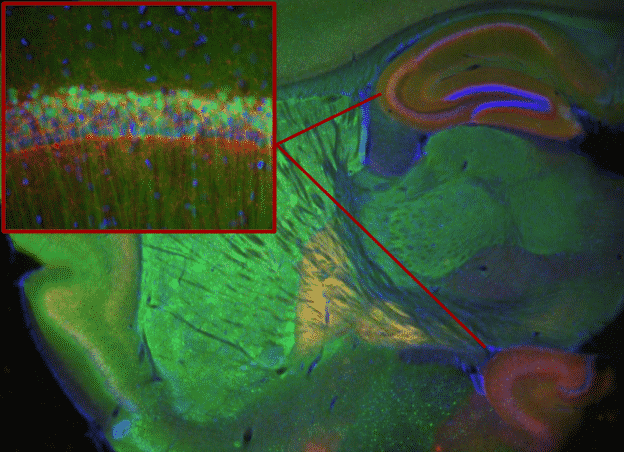
CBD vs THC in Cannabinoid Receptor Activation
The issue of CBD vs THC for sleep and other conditions comes from the observation that different cannabinoids have differing affinities for the cannabinoid receptors. THC binds readily to CB-1 receptors in the brain, while other cannabinoids will bind to receptors in other parts of the body. THC’s activation of CB-1 in the brain is attributed to the psychoactive effects of cannabis. Despite this effect, THC does stimulate other reactions that have great medicinal value.
“Unlike THC, CBD does not bind well to CB-1, which is why CBD does not have psychoactive effects like THC.”
THC and CBD both show activity influencing pain and sleep, mood and behavior, spasticity and nervous disorders, gastrointestinal disorders, and relief from diseases and disorders with symptoms affecting multiple body systems (cancer, MS, glaucoma, HIV/AIDS). The interaction between the CB-1 and CB-2 receptors with cannabinoids like CBD and THC can produce broad health benefits such as pain relief, anxiety relief, appetite stimulation, and mood improvement.
Benefits of Medical Marijuana Without the “High”
There are very few health issues that cannot find relief through either THC or CBD, or preparations that contain both. Products such as oils that include a full spectrum of cannabinoids, including THC and CBD, are very useful because they can act on more receptors than single cannabinoids. For patients that do not want to feel psychoactive effects, CBD products like oils, tinctures, and edibles. These products can provide the benefits of medical marijuana without the “high.” This is why many are considering CBD vs. THC for sleep and other conditions.
Medicinal Benefits of CBD vs THC Oil
Cannabis preparations have numerous therapeutic effects as an anti-spastic, analgesic, antiemetic, neuroprotective, and anti-inflammatory. In addition to the physical impact, cannabinoid-based medicines can be effective against certain psychiatric conditions, as illustrated below.
| Common Conditions Treated with CBD | Common Conditions Treated with THC |
|
|
*Dose levels reflect reported research levels used and are not a specific medical dose suggestion evaluated by a licensed physician
CBD vs THC Oil: Difference in Cannabinoid Chemical Structures
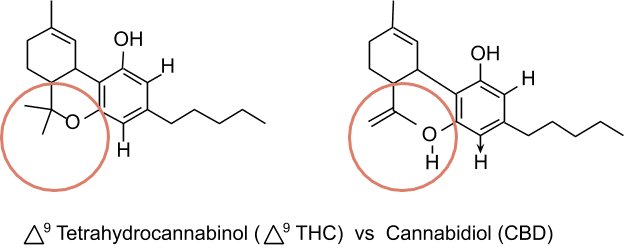
Both CBD and THC influence the endocannabinoid system by impersonating natural endocannabinoids in the body. When compounds and receptors fit together well, it is like a key in a lock. When the key turns the lock, the effects are released.
CBD and THC have different effects because they interact differently with cannabinoid receptors. CBD and THC (along with CBC) are synthesized from the acidic version of the cannabinoid cannabigerol (CBGA). This makes the molecular shape of CBD and THC almost identical with just a very slight difference in the position of a single molecule in the chemical compound’s overall shape. The slight variation in the molecular shapes of CBD and THC determines how the cannabinoids will interact with cannabinoid receptors.
THC vs CBD Oil Cannabinoids and Beyond
In addition to CBD and THC, cannabis contains several other beneficial cannabinoids such as cannabinol (CBN), cannabigerol (CBG), tetrahydrocannabivarin (THCV), cannabichromene (CBC), and over 100 others.
Common Cannabinoids
Tetrahydrocannabinol (THC) is the primary psychoactive cannabinoid that activates CB-1 and CB-2 receptors that produces the stereotypical “high” associated with cannabis but also has significant medicinal value.
Cannabidiol (CBD) is a non-psychoactive cannabinoid that does not bind well to CB-1 or CB-2 and can block other cannabinoids like THC from binding to CB-1. In this way, CBD counteracts the “high” feeling from marijuana with high THC. CBD produces effects indirectly by promoting the naturally present endocannabinoids in the body. CBD has significant medicinal value. It has been used in modern and traditional medicine as an anti-epileptic and anticonvulsant. CBD has healthy antioxidant activity neutralized reactive oxygen species (ROS) in the body that contribute to inflammation. CBD also has anti-tumor properties that promote cancer cell destruction.
Less Common Cannabinoids
Cannabinol (CBN) is produced when THC molecules degrade from exposure to light and air during storage. It is not present in high concentrations in fresh cannabis plants. CBN has mild psychoactive properties attributed to its strong affinity for binding to CB-2 and lower affinity for CB-1.
Cannabigerol (CBG) is a non-psychoactive contributor to the general effects of cannabis that binds to CB-2 and can block other cannabinoids from binding to CB-1. CBG has been observed to promote the death of cancer cells and inhibit tumor growth in mouse studies. CBG is naturally present in an acidic for. Enzymes modify CBG to produce THC, CBD, and CBC acids. Decarboxylations turns them into their “active” form.
Rare Cannabinoids
Tetrahydrocannabivarin (THCV) lessens the psychoactive effects of THC by blocking the binding of THC to CB-1. Cannabis strains with high levels of THCV are gaining a reputation as “diet weed” because THCV often suppresses appetite.
Cannabichromene (CBC) is a non-psychoactive cannabinoid with evidence of antitumor activity in mouse studies of breast cancer.
CBD vs THC Oil From Cannabis Plants
CBD and THC oil production in the cannabis plant is controlled by codominant genes. Codominant genes are genes that do not suppress each other from being expressed. This means that all cannabis plants will produce both THC and CBD. Through selective breeding cannabis plant varieties have been attained that produce THC and CBD in different proportions. Hemp plants, for example, are a type of Cannabis sativa that is an ideal source for non-psychoactive CBD oil because the plants produce less than 0.3% THC content.
Cannabis Species
Historically cannabis plants have belonged to the single species Cannabis sativa L. Over the years a strong case has been made for a two or three species model that captures the significant divergences in cannabinoid content and physical appearance due to selective breeding. The two species model is very commonly accepted today and differentiates between Cannabis sativa and Cannabis indica. Cannabis ruderalis is the third major cannabis variety that is still debated as being a different species of the plant.
Hybrids of the major varieties of cannabis have become very popular with the rise of medical marijuana. Hybrids are specially bred to have specific medicinal effects and can contain a wide range of THC and CBD levels depending on the parent plants. These designer strains can vary widely in appearance, flavor, cannabinoid content, and overall effect on the body.
Properties of Cannabis Varieties
| Cannabis Variety | CBD vs THC Oil | Features |
| Cannabis ruderalis | Lowest levels of THC | Ruderalis is a fast-growing plant that flowers based on age instead of light exposure. It has no recreational value and has the naturally lowest levels of THC among cannabis species.
Ruderalis can grow in the wild and is very useful in creating unique hybrids. It has a short and skinny plant appearance. |
| Cannabis sativa | High THC % | There are two main subtypes of sativa: a drug type (marijuana) and a fiber-rich type known as hemp. Sativa marijuana provides a more energizing high than indica.
Levels of psychoactivity depend on THC to CBD ratios. Hemp can be used to make non-psychoactive CBD preparations. Sativa plants are tall and skinny in appearance. |
| Cannabis Indica | Low THC % | Indicas are a drug type variety (marijuana) that provide a psychoactive high with deep body relaxation. Medicinal preparations will have psychoactive effects.
Indica plants appear shorter than sativas and are bushier. |
| Cannabis Hybrids | Variable | Hybrids are categorized as having a high CBD vs THC ratio; having a low CBD vs THC ratio; or as having near equal levels of both. Their traits are an intermediate of the two parent plants. Some hybrids are more psychoactive than others, and some are not psychoactive at all. |
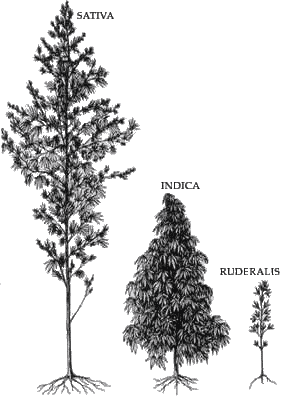
Medicinal Preparations of CBD and THC
There is a massive variety of cannabis products available. While drug producers are creating pharmaceutical grade product for treating severe illnesses, small producers are creating a range of products to cater to the legal allowances of their particular states.
The only pharmaceutical CBD product currently federally approved for use and sale is Epidiolex. Other pharmaceuticals like Sativex have been approved for use in other countries, but are still in clinical trials in the US. CBD pharmaceuticals aim to treat major diseases and disorders like epilepsy, anorexia from HIV/AIDs, muscle spasticity from multiple sclerosis (MS), and side effects of radiation treatment in cancer patients.
State-regulated cannabis products may or may not be psychoactive, so buyers need to take care when selecting products from a dispensary. Dispensary staff can be accommodating in guiding buyers to the type of product they are looking for, so consulting with them is highly advisable.
Medical Marijuana vs Recreational Marijuana
State-regulated medical marijuana products target the disease and disorder symptoms determined appropriate by the particular state government. In medical marijuana states, patients need to have a prescription from a doctor. In states with legal recreational marijuana, people are free to use cannabis as they see fit, so long as it is in accordance with state law.
CBD Oil Supplements
CBD is another type of cannabis product is derived from hemp but is CBD oil legal to order online? As long as these products contain THC levels that are under the legal limit, they can be sold and produced within the entire US. These CBD oils are extracted from the hemp plant, which is a non-psychoactive variety of Cannabis sativa. The levels of THC are not strong enough to get users “high.”
Hemp oil supplements can have great benefits. Similar to other nutritional supplements like vitamins, the effects of taking hemp-based CBD oils build over time. Most supplements do not produce distinct feelings of acute relief. The benefits are often the very gradual improvement of symptoms.
These products have no psychoactive concerns, but the minute levels of THC can be stored in body fat. Over time this storage could have the potential to trigger a positive drug test from taking CBD with THC in it, so users will want to be vigilant of that.
Cannabis as a Nutraceutical
Nutraceuticals are a class of supplements that encompass ingredients that have nutritional benefits and health benefits. It is a broad product category that consists of products like some dietary supplements, isolated nutrients, functional foods like prebiotics, and botanical products.
Nutraceuticals differ from dietary supplements in that they are able to help with nutrition as well as aid in the prevention and treatment of diseases. Cannabis nutraceuticals like CBD oil tincture from hemp and cannabis essential oils have several benefits to a person’s general health.
| Health Concern | Corresponding Cannabinoid Nutraceutical Compound |
| Inflammation | CBD, THC, CBC, CBG, THCV |
| Neuroprotection | CBD, Plant Terpene Compounds |
| Antioxidant | CBD, THC, Cannabis Essential Oil (several plant compounds including terpenes) |
| Obesity | THCV, CBD |
Activating and Extracting Cannabinoids
Cannabinoids are present in the cannabis plant in a dormant state that would not activate effects in the human body. Heating cannabinoid molecules change part of the chemical structure and create bioavailable versions. This process is called decarboxylation.
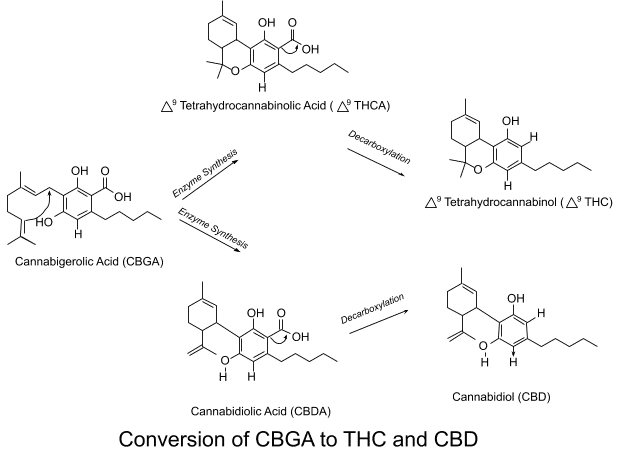
Cannabis plant floral buds are the primary source of cannabinoids, primarily THC and CBD. The flowers are harvested, dried, and then they can be sold and used as a dried herb, or processed further. Some degree of decarboxylation occurs with drying flowers. Mainly, decarboxylation occurs when the ground-up flower is smoked or vaporized.
In comparing CBD vs THC oil, you can make the best CBD oils, and the best CBD oil tinctures, leaves and stems of the plant can be used in addition to flowers. For the best CBD hemp oil tinctures, flowers are not used, but seeds can be utilized along with stems. Plant materials are decarboxylated by baking or boiling in a hot water bath at low temperatures for an extended period of time.
Extracting Cannabinoids
There is a large variety of extraction methods that can be used to coax cannabinoids out of the plant. The most common way to extract cannabis is by using alcohol and heat. Butane and propane can be used to make extractions, but are less desirable because of the chemical traces that can be left behind. Carbon dioxide extraction uses gas and high pressure to remove compounds from plant tissue and is one of the best methods for creating a very pure extract without chemical remnants.
CBD vs THC: Are Cannabinoid Medicines Addictive?
Hemp-based CBD oils have not been widely reported to have significant addictive or dependent properties. The use of marijuana-based products containing only CBD or combinations of CBD and THC has also shown to be very safe with few incidents of addictive or dependent behavior.
Surprisingly, even recreationally smoked marijuana has rare levels of addiction and very few long-lasting withdrawal symptoms. Heavy chronic users of psychoactive varieties of cannabis more commonly experience withdrawal symptoms.
“…some evidence suggests that marijuana can, in some cases, be addictive and that it may present other health problems as well, particularly in heavy users. That said, most people suffer no ill effects from a single or occasional use of the drug.”
CBD Addiction and CBD Side Effects
A physician should always be consulted when it comes to expert opinions on the risk of addiction, side effects of using CBD, and symptoms of withdrawal. Overall, research on cannabis use, in general, has reported that cannabis products are safe and effective, but those broad claims do not have federal clinical trial data to certify the safety of products that fall under state licensure.
The top three side effects of cannabinoid use are commonly reported to be tiredness, dizziness, and dry mouth. Some users will build tolerance and experience fewer or less-intense side effects with continuous use. Contraindications exist for cannabinoid use, and allergies to cannabis do exist.
CBD vs THC Oil – Which is Right for Me?
THC and CBD products are safe but have different effects than products containing only CBD and other nonpsychoactive cannabinoids. Some users will have better results from CBD vs THC oil. It’s essential to keep an open mind when trying cannabis products because there is an endless variety of preparations to try. Medical marijuana is very much personalized medicine, and it may take some trial and error to find what works best for particular symptoms.
Apart from medical marijuana, hemp-based CBD products like nutraceutical CBD oil tincture also has excellent health benefits for people and pets. Dogs have similar brain healing effects and receptors to humans, so many in the veterinary industry have found hemp-based CBD for dogs in pain, inflammation, muscle spasticity, anxiety, and nausea.
Qualities |
CBD |
THC |
| Psychoactive “High” | – | + |
| Illegal | +* | +* |
| Side Effects | – | + |
| Drug Test Positive | +** | + |
| Pain Relief | + | + |
| Nausea Relief | + | + |
| Migraine Relief | + | + |
| Anxiety Reduction | + | + |
| Appetite Increase | – | + |
| Anti Inflammatory | + | + |
| Seizure Decrease | + | – |
*At the time of writing, both CBD and THC are illegal federally, some states have laws that make them legal for medical or recreational purposes, or both.
**CBD isn’t always detected, but hemp products may contain trace amounts of THC. If that THC shows up in high enough concentrations, it can produce a positive drug test.
References
- Arkowitz, H., Lillenfeld S.O. (2012 Mar 01). Experts tell the truth about pot: Marijuana use can be problematic but only rarely leads to addiction. Scientific American, Springer Nature America, Inc. Retrieved from: https://www.scientificamerican.com/article/the-truth-about-pot/
- Atakan, Z. (2012). Cannabis, a complex plant: Different compounds and different effects on individuals. Therapeutic advances in psychopharmacology, 2(6), 241-54. Retrieved from: https://www.ncbi.nlm.nih.gov/pmc/articles/PMC3736954/
- Chandra, S., Lata, H., Khan, I. A., & ElSohly, M. A. (2013). The role of biotechnology in Cannabis sativa propagation for the production of phytocannabinoids. In Biotechnology for Medicinal Plants (pp. 123-148). Springer, Berlin, Heidelberg. DOI: 10.1007/978-3-642-29974-2_5. Retrieved from: https://link.springer.com/chapter/10.1007/978-3-642-29974-2_5
- Grotenhermen, F., & Müller-Vahl, K. (2012). The therapeutic potential of cannabis and cannabinoids. Deutsches Arzteblatt international, 109(29-30), 495-501. Retrieved from: https://www.ncbi.nlm.nih.gov/pmc/articles/PMC3442177/
- Hartsel, J. A., Eades, J., Hickory, B., & Makriyannis, A. (2016). Cannabis sativa and Hemp. In Nutraceuticals (pp. 735-754). DOI: 10.1016/B978-0-12-802147-7.00053-X. Retrieved from: https://www.sciencedirect.com/science/article/pii/B978012802147700053X
- Hillig, K. W., & Mahlberg, P. G. (2004). A chemotaxonomic analysis of cannabinoid variation in Cannabis (Cannabaceae). American Journal of Botany, 91(6), 966-975. Retrieved from: https://www.ncbi.nlm.nih.gov/pubmed/21653452
- Iffland, K., & Grotenhermen, F. (2017). An update on safety and side effects of cannabidiol: a review of clinical data and relevant animal studies. Cannabis and Cannabinoid Research, 2(1), 139-154. Retrieved from: https://www.ncbi.nlm.nih.gov/pmc/articles/PMC5569602/
- Roger G Pertwee. (2006). Cannabinoid pharmacology: the first 66 years. British journal of pharmacology, 147 Suppl 1(Suppl 1), S163-71. Retrieved from: https://www.ncbi.nlm.nih.gov/pmc/articles/PMC1760722/
- Russo, E. B. (2008). Cannabinoids in the management of difficult to treat pain. Therapeutics and clinical risk management, 4(1), 245. Retrieved from: https://www.ncbi.nlm.nih.gov/pmc/articles/PMC2503660/
